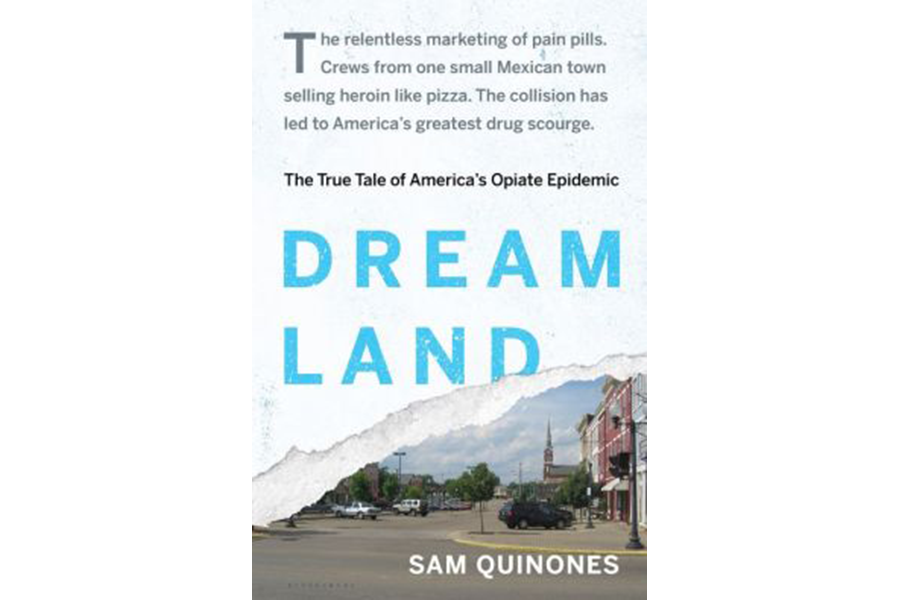'Dreamland' is the must-read book about America's heroin crisis
Loading...
At least 300,000 Americans use heroin, according to the latest statistics. From 2010 to 2013, the number of deaths from overdoses tripled from 3,036 to 8,257. Not coincidentally, since 1999 the number of prescription painkillers prescribed and sold in the United States has quadrupled, although incidents of chronic pain have not. Heroin use thrives on a disturbing symbiosis with painkiller addiction: 3 out of 4 new heroin users have reported they had previously abused prescription painkillers.
And these twin addictions have spread in places one wouldn’t expect: Ohio, West Virginia, Kentucky, Tennessee. The face of opiate addiction is no longer the inner-city homeless or actors in Greenwich Village. It’s suburban white kids in Columbus, soccer moms in Nashville, rural men in West Virginia.
Award-winning journalist Sam Quinones (“True Tales from Another Mexico,” “Antonio’s Gun and Delfino’s Dream” ) traces the history of opiate addiction and its spread through the nation in Dreamland, a book that every American should read. And I state that without reservation. The story Quinones tells is an illustration of the failures of medicine in the so-called free-market system, of the destructiveness of corporate venality, and of the desperate and criminal lengths to which people mired in poverty or tormented by addiction can be driven.
“Dreamland” is the result of relentless research and legwork on the part of Quinones, as well as his talented storytelling. The opiate addiction epidemic was caused by a convergence of multiple, seemingly unrelated factors, and Quinones takes these narrative strands and weaves them together seamlessly. He takes us from pharmaceutical laboratories to the trailer parks of West Virginia, and from the poppy-growing regions of Northwestern Mexico to the streets of the Rust Belt town of Portsmouth, Ohio, without a moment’s confusion or narrative misstep. He knows the perfect moment to leave one topic and move on to the next.
For decades US pharmaceutical companies had been trying to create a non-addictive drug that could effectively control chronic pain. The 1995 FDA approval of Oxyontin, a drug almost chemically identical to heroin, occurred when insurance companies were increasingly reluctant to cover long-term treatment of chronic pain via effective but expensive techniques such as physical therapy and counseling. Purdue Pharma, which owned the patent to Oxycontin, reassured everyone it was non-addictive. When the company sales representatives cited non-existent studies demonstrating that Oxycontin could be used safely to treat chronic pain, doctors were all too willing to listen. Soon patients were hooked. Then people who didn’t suffer chronic pain but had heard about Oxycontin’s effects were eager to try it. And retirees who could get prescriptions began selling the pills to supplement their retirement income. Scams for getting and selling the drug multiplied.
Then the Xalisco Boys came to town. One of the finest narrative and journalistic accomplishments in this book is Quinones's portrait of this drug-dealing network whose members are both business paragons and criminal geniuses. They all come from a poppy-growing region of Northwest Mexico and sell black tar heroin, which is cheap, potent, and easy to make. Their dealers are paid a salary, so they have no incentive to dilute their product to maximize sales. Since violence almost always draws the attention of cops, the dealers seldom carry guns. And since police and the press like big drug busts, large quantities of heroin in one location or with one dealer are rare. And they have a customer service ethos that matches Apple’s or Trader Joe’s, along with a delivery policy similar in spirit to “Domino’s 30 minutes or less:” Did a customer feel overcharged? Was the driver late? You’ll get free extra heroin next time. Was a driver unfriendly? Expect an apologetic phone call from his boss.
The Xalisco Boys also multiplied their return on investment in superior product and customer service by seeking out territories where there were no competitors. They avoided the American Southwest and the biggest cities, which were overflowing with drug dealers. The untapped markets were in places like the dying industrial Midwest, where members of families deep in second-generation unemployment were desperate for something that would make them feel like (in the words of one drug user) “king of the world.” They had already discovered Oxycontin and doctors who would write a prescription without asking questions. And if that doctor got caught, the Xalisco Boys were ready to step in with a product that gave the same high. And no more waiting in line at the pharmacy: The Xalisco Boys delivered.
The story of how opiate addiction spread is fascinating enough, but “Dreamland” is also peppered with bitter ironies. Heroin was invented by Bayer. The wife of the inventor of the hypodermic needle was the first person to die of an injected drug overdose. The dirty, worn clothes of a Mexican looking for farm work make him an automatic target for the Border Patrol, while a well-dressed drug dealer in a nice car can cross the border with ease.
This book is as much of a page-turner as a good mystery, as well as being thoroughly and disturbingly illuminating about a national crisis.








